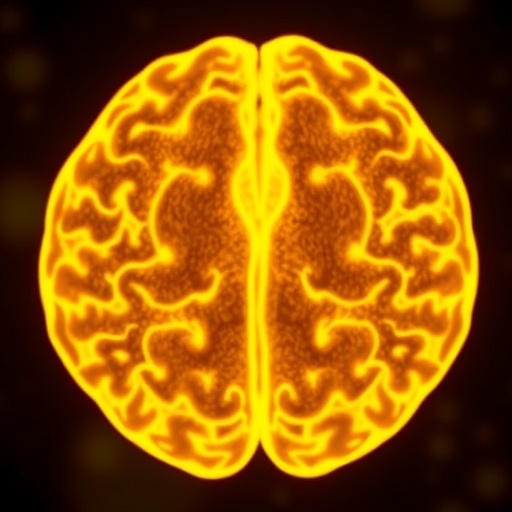
In the digital age, artificial intelligence has become an indelible part of everyday life, and ChatGPT, an advanced AI language model developed by OpenAI, stands at the forefront of this technological revolution. While the benefits of such systems in enhancing productivity and creativity are undeniable, recent scholarly work is beginning to uncover a more complex and nuanced picture of human interaction with these tools. A pioneering study published in the International Journal of Mental Health and Addiction has introduced the Problematic ChatGPT Use Scale (PCUS), a novel framework designed to evaluate the darker, less overt consequences of excessive reliance on AI conversational agents. This research offers important insights into how the entanglement between humans and AI can simultaneously stimulate cooperation and lead to potentially harmful behavioral patterns.
Emerging in 2025, the study by Maral, Naycı, Bilmez, and colleagues conceptualizes problematic AI use not merely as frequent usage or dependence but as a multidimensional phenomenon encompassing psychological, social, and cognitive domains. Their work is groundbreaking in that it does not regard ChatGPT as a neutral technological utility but instead interrogates the evolving dynamics of AI-human collaboration and the shadowy pitfalls masked beneath its polished interface. The PCUS captures subtle ways in which users may develop maladaptive habits, such as overtrusting AI-generated content, neglecting critical thinking, or adopting compulsive interaction patterns that disrupt daily functioning.
At the core of this investigation lies a recognition that ChatGPT’s conversational prowess enables it to simulate human-like dialogue with exceptional fluency. This fuel for engagement, while enhancing productivity in fields ranging from academic research aid to creative writing, also raises questions about the boundaries between assistance and dependence. The authors argue that problematizing ChatGPT use necessitates a fine-grained analysis of user motivations, emotional responses, and the consequent effects on cognitive autonomy. Their scale, developed through rigorous psychometric validation, operationalizes these concerns by mapping symptomatic behaviors and emotional states linked to excessive ChatGPT interaction.
.adsslot_njhsFTc07y{width:728px !important;height:90px !important;}
@media(max-width:1199px){ .adsslot_njhsFTc07y{width:468px !important;height:60px !important;}
}
@media(max-width:767px){ .adsslot_njhsFTc07y{width:320px !important;height:50px !important;}
}
ADVERTISEMENT
Technically, the Problematic ChatGPT Use Scale integrates dimensions such as compulsive engagement, emotional reliance, and cognitive dissonance. Compulsive engagement refers to the uncontrollable impulse some users may experience to initiate conversations with the AI, even in contexts where human interaction or independent reasoning would be more appropriate or effective. Emotional reliance encapsulates the tendency to seek validation, reassurance, or companionship through the AI’s feedback loops, leading to blurred boundaries between virtual and real social support. Cognitive dissonance, on the other hand, emerges when users neglect potential inaccuracies in AI-generated content, prioritizing convenience over scrutiny, which can compromise decision-making quality.
The researchers employed a mixed-method approach, utilizing both qualitative interviews and quantitative surveys to gather comprehensive data from diverse user populations. Their sample included students, professionals, and casual users, reflecting the widespread penetration of ChatGPT in society. Analysis revealed that problematic use patterns were not constrained to any demographic but rather spread across all age groups and educational levels, emphasizing that the psychological interplay with AI is a universal challenge. Moreover, the findings suggest that individuals with preexisting vulnerabilities, such as anxiety and compulsive tendencies, are particularly susceptible to developing maladaptive use behaviors.
From a neurocognitive perspective, the study delves into the mechanisms underpinning AI engagement, highlighting how the reward circuits of the brain may become entrained by ChatGPT’s instant and seemingly empathetic responses. This dopaminergic reinforcement loop parallels patterns observed in behavioral addictions, whereby the anticipation and receipt of positive feedback foster repetitive behaviors despite adverse consequences. The authors draw on neuropsychological models to explain how continuous exposure to AI’s engaging responses might attenuate one’s capacity for self-regulation, ushering in a subtle yet insidious form of dependence.
Importantly, the scale also evaluates the social ramifications of intensive ChatGPT use. As AI begins to mediate an increasing proportion of interpersonal interactions—ranging from customer service chatbots to mental health applications—users may gradually prefer AI-mediated exchanges over human communication. This shift could lead to social isolation or atrophy of critical social skills. The study warns that while AI can augment human connection, overreliance risks deteriorating genuine relational bonds, potentially exacerbating issues of loneliness and alienation.
In exploring the ethical dimensions, the authors advocate for responsible AI design and implementation strategies that acknowledge these psychological risks. They recommend embedding transparency cues in AI systems, encouraging critical engagement rather than passive consumption. Furthermore, they emphasize the necessity of user education programs to cultivate digital literacy, enabling individuals to navigate AI interactions with awareness and autonomy. The PCUS thus serves not only as a diagnostic tool but also as a foundation for preventive interventions aimed at mitigating the emergence of problematic AI use behaviors.
The implications for mental health professionals are profound. Psychiatric and psychological clinicians need to become cognizant of the distinctive challenges posed by AI companions like ChatGPT. The study suggests integrating screening for problematic AI use into clinical assessment protocols, especially for patients presenting with anxiety, depression, or obsessive-compulsive symptoms. This awareness can facilitate early identification of maladaptive patterns and inform tailored therapeutic approaches that address both underlying mental health concerns and emerging technology-related behaviors.
Technological and societal stakeholders must also consider the regulatory landscape surrounding AI deployment. The PCUS provides empirical evidence supporting the formulation of guidelines regulating AI accessibility and usage patterns, similar to frameworks governing internet addiction and digital well-being. Policymakers could leverage these insights to implement user-centered design principles and usage monitoring systems that balance innovation with psychological safety. Anticipating the rapid evolution of AI capabilities, proactive governance is essential to prevent the escalation of negative consequences as these systems become increasingly entrenched in daily routines.
Moreover, the study sheds light on the paradoxical nature of AI-human collaboration—while enhancing creative potential and problem-solving efficiency, it simultaneously introduces risks of cognitive offloading and diminished human agency. Users may become habituated to outsourcing complex reasoning to AI, which, though expedient, could erode critical thinking skills over time. The delineation between productive collaboration and harmful dependency is thus a central focus, emphasizing the need for guidelines that preserve human intellectual sovereignty in an AI-pervasive world.
Of particular interest is the early identification of specific user profiles more prone to problematic use patterns. The study’s findings point toward a need for personalized interventions that consider individual psychological traits and contextual factors. This precision approach to managing AI engagement can foster more resilient interactions and prevent the onset of harmful behaviors. Importantly, such personalized strategies underscore the heterogeneity of AI users and challenge one-size-fits-all assumptions commonly found in digital wellness discourses.
The study’s contribution extends beyond theoretical insights; it inaugurates a scalable and empirically validated instrument for measuring a phenomenon that, until now, remained elusive. The Problematic ChatGPT Use Scale opens avenues for longitudinal studies to track changes in user behavior over time and assess the impact of educational or policy interventions. As ChatGPT and similar models proliferate, continuous monitoring and adaptive frameworks will be indispensable to safeguarding mental health and cognitive integrity in increasingly AI-integrated societies.
Finally, this research invites a reevaluation of the societal narratives surrounding AI. While much discourse celebrates AI’s promise and utility, the nuanced perspective introduced by the PCUS reveals a necessary cautionary dimension. A balanced public conversation must address not only the marvels of AI assistance but also confront the psychological vulnerabilities that emerge in tandem. In doing so, society can better harness AI’s potential while proactively mitigating risks, ensuring a sustainable and human-centric future of technology use.
In summary, the introduction of the Problematic ChatGPT Use Scale represents a pivotal moment in AI research, illuminating the shadowy underside of one of the world’s most popular AI tools. By bridging psychological theory, neurocognitive science, and technological analysis, Maral and colleagues provide a comprehensive framework for understanding and managing the complex realities of human-AI interaction. As we enter an era of unprecedented AI integration, such research is not only timely but essential for navigating the promises and perils of our increasingly intertwined futures.
Subject of Research: Problematic and maladaptive use patterns of the ChatGPT AI language model and their psychological, cognitive, and social impacts.
Article Title: Problematic ChatGPT Use Scale: AI-Human Collaboration or Unraveling the Dark Side of ChatGPT.
Article References:
Maral, S., Naycı, N., Bilmez, H. et al. Problematic ChatGPT Use Scale: AI-Human Collaboration or Unraveling the Dark Side of ChatGPT. Int J Ment Health Addiction (2025). https://doi.org/10.1007/s11469-025-01509-y
Image Credits: AI Generated
Tags: AI-human collaborationcognitive impacts of ChatGPTdark side of artificial intelligenceethical concerns in AI technologyexcessive reliance on AImental health and AInuanced AI interactionsProblematic ChatGPT useProblematic ChatGPT Use Scaleproductivity and creativity in AIpsychological effects of AIsocial consequences of AI usage





